Preventing the spread of COVID-19 isn’t the only reason why having fresh, high-quality air is important. It also is crucial to the preservation of artworks in any museum’s care. Read on to learn all about how we monitor air within our galleries, including why we prioritized air quality long before the pandemic.
Carefully monitoring the air quality, humidity, and temperature of the galleries is critical in preserving art.
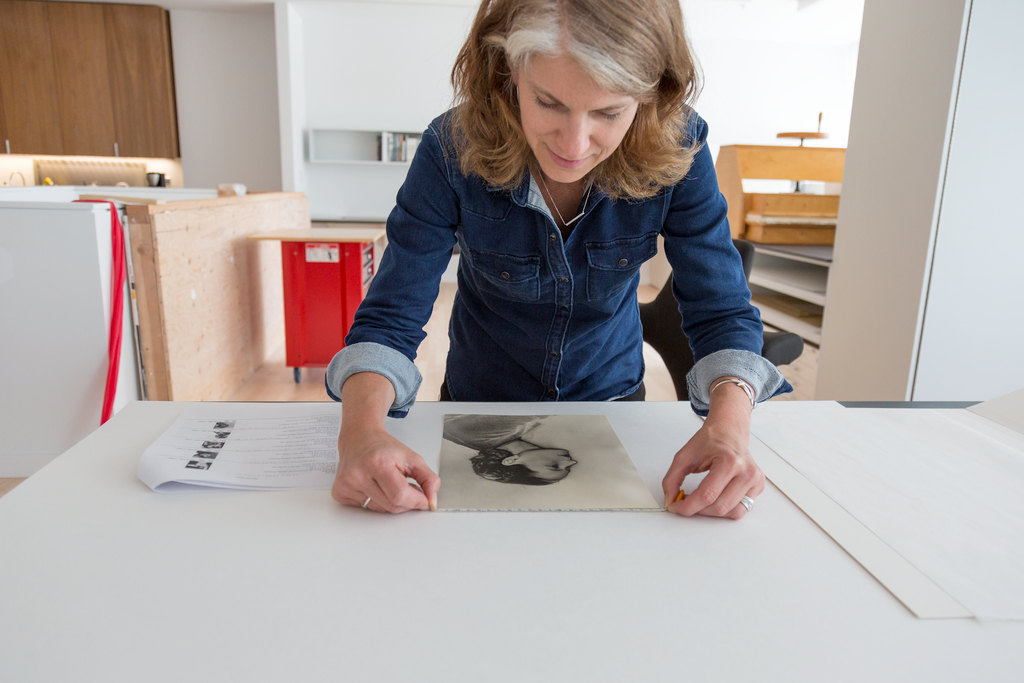
Even before the pandemic, a team of engineers and art conservators worked to ensure the air at SFMOMA was extremely clean. Maintaining certain set points for relative humidity and temperature — and using sensors to ensure that any changes occur very slowly — helps preserve over 33,000 artworks in SFMOMA’s permanent collection.
“Filtering out outside pollution and particulates like dirt and grime is a preventative measure to care for all the artwork in our collection, but especially unglazed paper works,” Paper Conservator Amanda Hunter Johnson said.
Having a robust filtration system is not enough to keep the building’s air clean, of course. The museum still relies on age-old, tried-and-true cleaning techniques, such as dusting. “Good housekeeping is necessary in a museum just as it is in your own home,” said Head of Conservation Michelle Barger.
As Barger explained, dust is primarily made up of exfoliated skin and can attract “tiny little pests” that “migrate to organic-based artworks in the building” (think textiles and wood). To prevent damage to the art, SFMOMA’s maintenance and conservation teams conduct dustings on a regular basis.
SFMOMA’s building is LEED Gold-Certified.
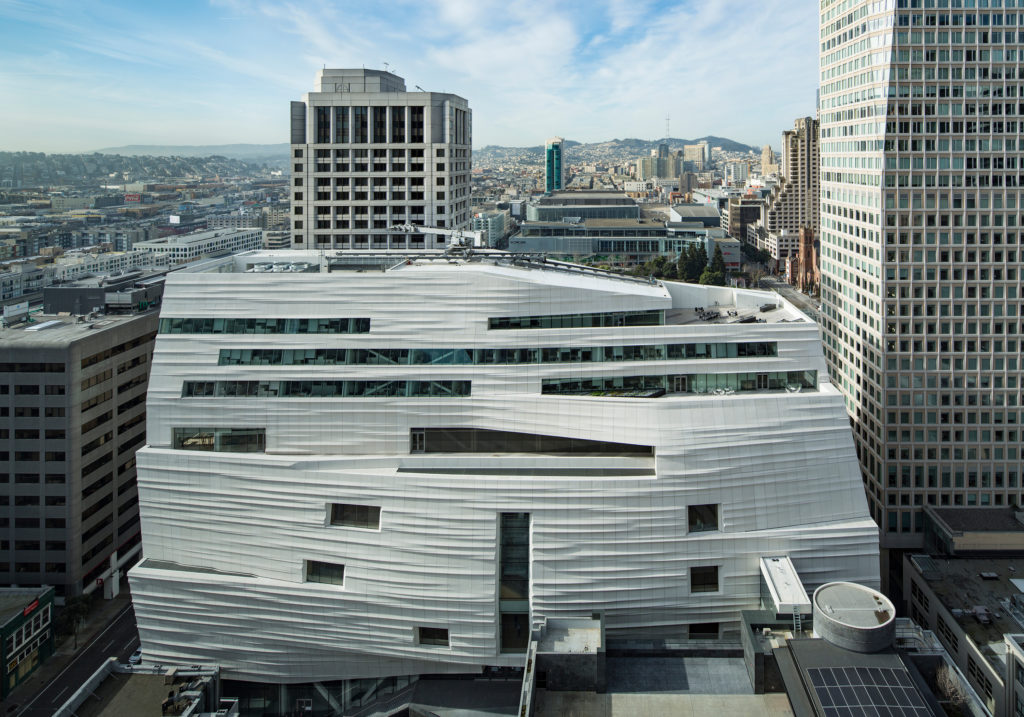
In 2016, SFMOMA underwent a transformational expansion that almost tripled the museum’s amount of gallery space. The renovated site, designed by architectural firm Snøhetta, needed to satisfy San Francisco’s requirement that all new construction meet LEED Gold criteria. That meant the museum had to score 60 or higher out of about 100 points related to indoor environmental quality, water efficiency, and several other sustainability markers.
For the museum, it was a tricky balancing act: the new building would have to be as energy efficient as possible, while also allowing staff to manage the temperature and humidity needed to protect the art. “Optimize, optimize, optimize” became the mantra, as Lindsay Westbrook wrote in 2016. In the end, SFMOMA achieved a safe, LEED Gold-Certified climate for its large collection of modern and contemporary art.
Our air filtration system helps take care of the art in the collection and prevent the spread of COVID-19.
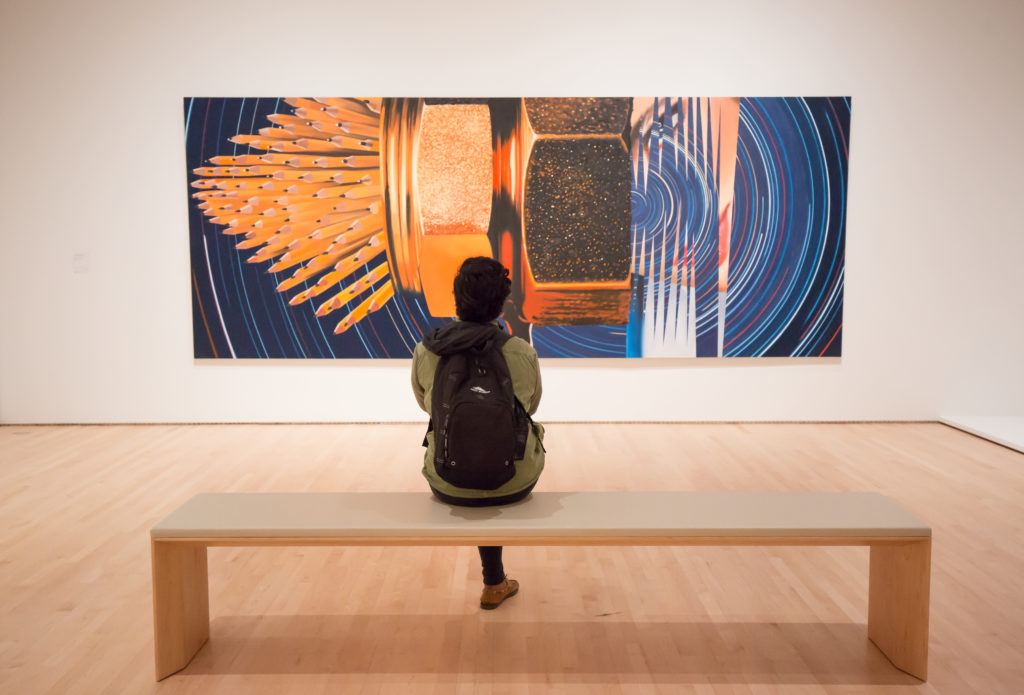
SFMOMA’s air filtration system has two filters that remove pollutants from the air before they reach the galleries. The first set of filters removes large pollutants like dust and pollen. The second set of filters traps microscopic particles from smoke and bacteria, which is especially relevant to public health during the COVID-19 pandemic and California wildfire season.
“Our regular air filtration system is very good at removing pollutants including mold, bacteria, sneeze and cough droplets, and other particles that carry viruses from the air,” said David Dial, the director of facilities and operations at SFMOMA.
The museum uses filters that are equivalent to an N95 mask in removing virus particles from the air.
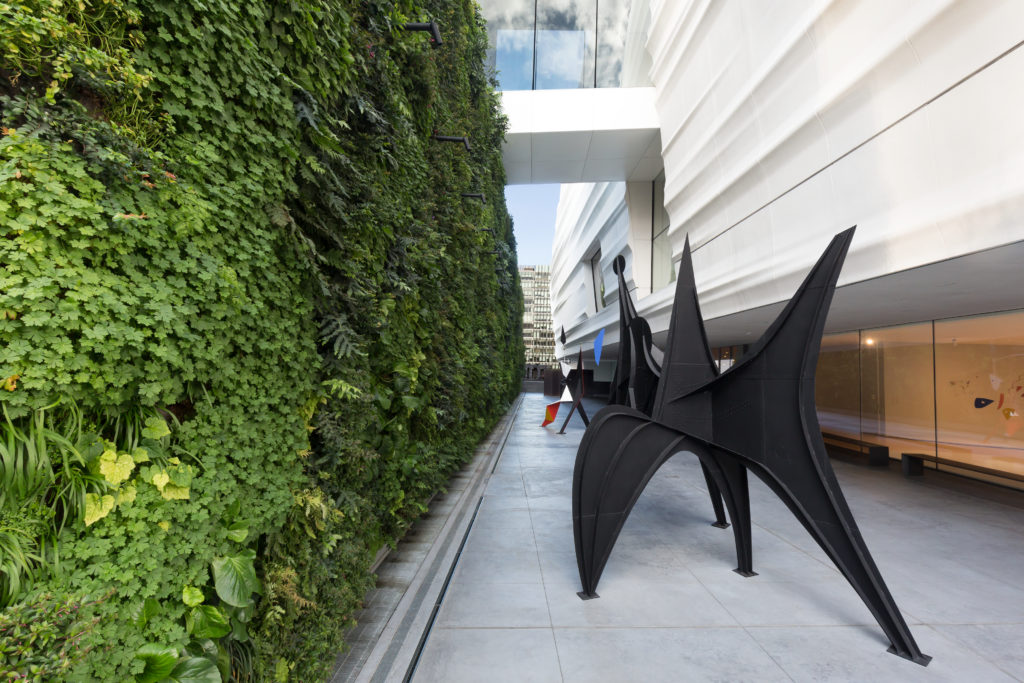
In response to the pandemic, SFMOMA adjusted its building management system to the highest possible “air changes rate,” or how frequently the air gets replaced in each room. SFMOMA also followed the recommendations of HVAC (Heating, Ventilation, and Air Conditioning) professionals to upgrade to the MERV 14 filters used in healthcare settings.
“These filters are even better at removing tiny particles that carry viruses such as the COVID-19 virus and are equivalent to an N95 mask in their effectiveness at removing virus particles from the air,” Dial said.
SFMOMA’s COVID-19 precautions, say Johnson and Barger, make them feel more comfortable breathing in the air at the museum. “The museum is one of the healthiest places to be,” Johnson said. “Because of the air filtration systems, because of the Living Wall, and for a good dose of art.”
The museum’s air benefits from San Francisco’s mild climate.
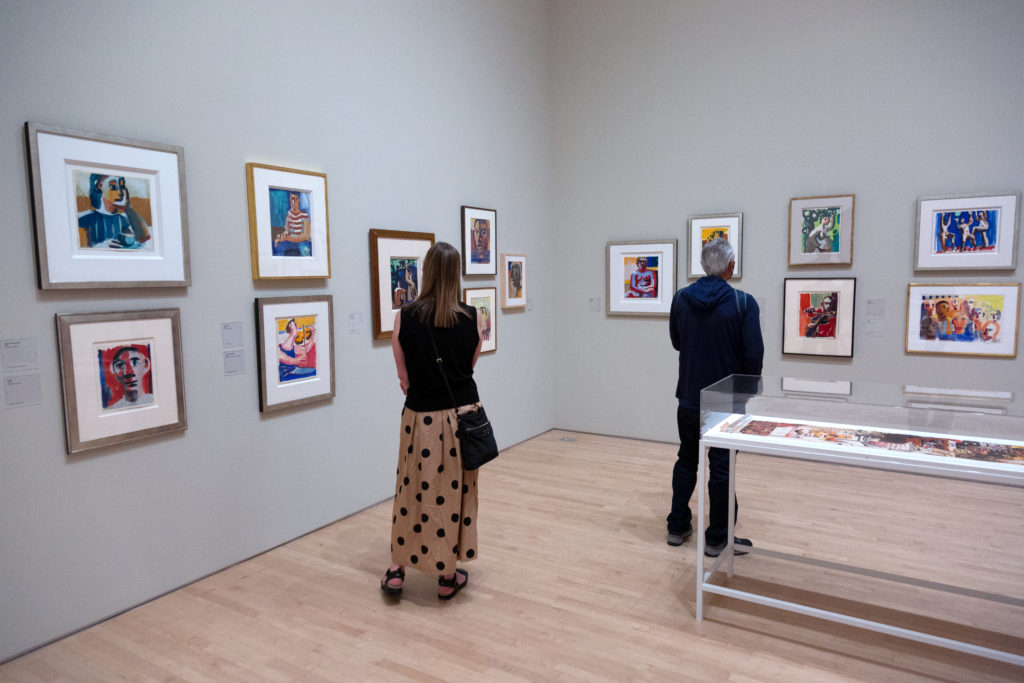
It hasn’t snowed in 46 years in San Francisco, and when temperatures break 80 degrees, it’s considered newsworthy. Our beloved city’s temperate climate gives the museum a natural edge: provided there aren’t wildfires, plenty of outside air can enter the galleries. In fact, during San Francisco’s initial shelter-in-place order in March 2020, the museum reconfigured its ventilation system to draw in 100 percent outside air.
“San Francisco’s mild climate permits us to use more fresh air from outside without using enormous amounts of energy to bring the air to the temperature and humidity that the art requires, and our patrons enjoy,” Dial said.